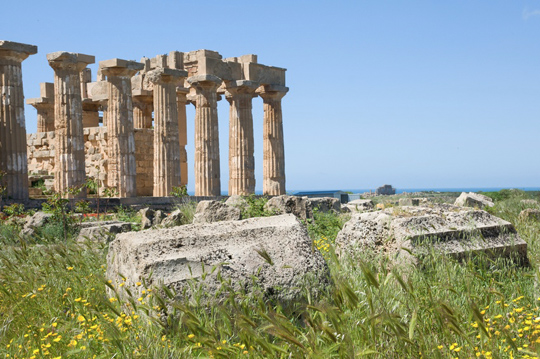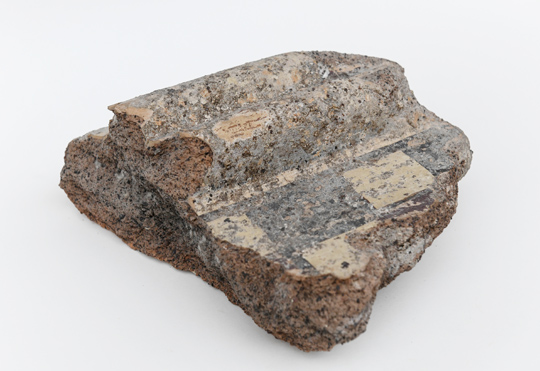Pieces of Selinunte
Freiburg, Apr 03, 2018
Once in a while, historical objects are donated as gifts to the Archaeological Collection of the University of Freiburg. Quite often, these are valuable pieces. In this series, we tell you about the most beautiful and extraordinary acquisitions. This time we focus on a fragment of a terracotta cornice from Sicily.
 The archaeological site at Selinunte in Sicily is a treasure trove
The archaeological site at Selinunte in Sicily is a treasure trove
Photo: mirekdeml/Fotolia
The donor of this interesting piece received it as a gift himself once. The fragment of terracotta that Helmut Lucas donated to the Archaeological Collection of the University of Freiburg had been given to him by a friend decades before. The two had traveled together to see the ancient ruins of the city of Selinunte on the island of Sicily. “It was raining hard, and we were climbing around in the ruins when he saw the piece in a deep crevice. It was the 1950s, and my friend said we shouldn’t leave it there to rot. Later, he gave it to me,” said Lucas, who is now 86 and lives in Kirchzarten.
For the Archaeological Collection, the gift also poses many challenges. “Today, removing a piece like this is considered a theft of cultural property and is strictly forbidden,” said Dr. Jens-Arne Dickmann, the curator of the collection. “After finishing the scientific processing and conducting our own research, we will send a detailed description with measurements and photos to the archaeological center in Selinunte, so that they can compare the fragment with objects on site. Perhaps, it will be possible to locate its origin and restore it.”
 Part of a temple? The fragment could be from an important building.
Part of a temple? The fragment could be from an important building.
Photo: Patrick Seeger
The golden age of the Greek polis
All in all, however, the gift was a stroke of luck, also for Dickmann, who is very familiar with the excavation site and its history. As an archaeology student in the late 1980s, he himself worked on an archaeological excavation in Selinunte for the German Institute of Archaeology (DAI) in Rome. He later went on to manage the DAI’s excavation, documentation, and conservation project in Pompeii. “This object is a piece of fired clay that was most likely part of a cornice on the outside of a building. After it was fired, it was stuccoed and painted in three colors in a checkerboard-like pattern,” said Dickmann. “The fragment is perfect for teaching students how to determine the age and style of objects, and it’s also great for drawing exercises.”
The building that the object belonged to in Selinunte was probably built around 500 B.C., during the golden age of the Greek polis. “Selinunte was a prospering city, with many temples, a city wall, an orthogonal system of streets with major and minor roads, an acropolis, an agora, and a harbor on the river,” said Dickmann, adding that the it is possible that fragment came from an important, representative building. “It could even be from a temple, or a treasury.”
Hans-Dieter Fronz
Archaeological Collection of the University of Freiburg

